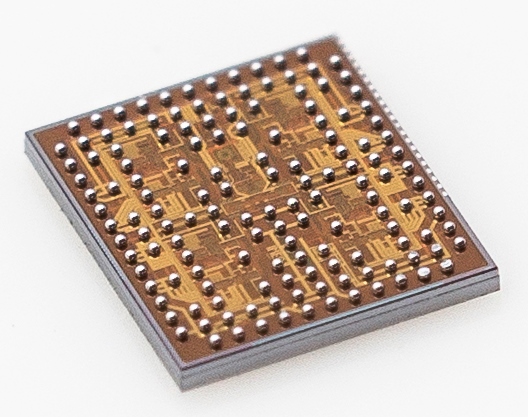Researchers at the Belgian nanoelectronics research center, imec, and at Vrije Universiteit Brussel (VUB) have unveiled a four-antenna path, beamforming transceiver fabricated in 28-nm CMOS technology that is intended for use in 60-GHz multi-Gbit/s communication. Due to the tremendous growth of apps for mobile data/display/audio traffic, new spectral resources in the mm-wave frequency bands are needed to support user demand. The transceiver is said to be a breakthrough in developing a small, low-cost, and low-power solution for multi-gigabit communication targeting WiGig and wireless backhaul.

The chip was created to support mm-wave wireless networks based on small outdoor cells that use spectrum-efficient beamforming with phased antenna arrays for directional transmission or reception. The imec/VUB transceiver architecture uses direct conversion and analog baseband beamforming with four antennas. Inherently simple, the architecture is not affected by image frequency interference.
According to imec’s Harmke de Groot, three years ago, the group developed a 40-nm architecture with a similar signal path, but it was only able to address three of the four WiGig channels. And while it, too, relied on a direct conversion signal path with analog baseband beamforming, the receiver of the latest chip has an 18-dB higher maximum gain (62 dB). The frequency synthesis in the old chip used a classical integer-N phase-locked loop operating at 60 GHz that was sensitive to pulling by the power amplifier in the transmitter. The PLL in the new chip avoids this by using a 24-GHz phase-locked loop that subharmonically locks a 60-GHz quadrature oscillator, and is thus inherently immune to pulling disturbance. Notes Harmke, “The new chip has a [670 mW] TX and an [431 mW] RX on the same chip … whereas in the old generation TX and RX are on a separate chip. The TX-to-RX EVM is better than −20 dB in the four WiGig channels, whereas in the previous generation only −13 dB was obtained.”
The 7.9-mm2 prototype transceiver chip was validated with an IEEE 802.11ad standard wireless link of 1 m. The transmitter consumes 670 mW and the receiver 431 mW with a 0.9-V power supply. The transmitter-to-receiver performance, with a transmitter equivalent isotropic radiated power (EIRP) of 24 dBm, allows for QPSK as well as 16 QAM modulations according to the IEEE 802.11ad standard, achieving very high data rates up to 4.62 Gbits/s. Interested companies are invited to join imec’s 60-GHz R&D as a research partner; contact Charlotte Soens by e-mail (charlotte.soens@imec.be) or phone (+ 32 16 28 86 78).
Advertisement
Learn more about Imec





